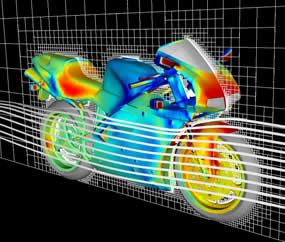 |
about harpoon | key benefits | features | technical spec | book a demo |
|
FAQ: Tips on Harpoon Boundary Layer Meshing Question Can you give me some pointers in boundary layer meshing using Harpoon? Answer Here are a few tips for Boundary Layer meshing. 1. Reduce the number of level variations on surfaces where BLs will be created. Constant sizes are ideal. If several sizes are necessary, limit this to 1-2, or at most 1-3 levels of change. 2. For STAR-CD, increase from 40 to 50 (or even 60 if user happy to do so) 3. For larger Boundary Layers, remove hanging nodes or use 100% Tet mesh. BL Meshing Procedure 1. Assign BL levels to geometry or surface parts. For best results keep BL below 3 times smallest cell height. No smoothing is required between meshing and BL creation 2. Smooth at end of meshing. “Smooth all cells” works well. 3. For cells with remaining high skews, try hand-adjustment of nodes, in mesh fixing options, "Adjust Cell Nodes" 4. Compute and display Mesh Quality histogram. Display Worst Skew and hand modify these as desired. Mesh without BLs first Additional Notes:In some cases, such as internal ones, 2 times or even 1 times the minimum height should be used Because Harpoon is very good at creating a mesh on very complex/dirty geometries, it is easy to forget that not all geometies are suitable for Boundary Layer production. Some geometries are almost impossible to put a boundary layer on due to their complexity. |
 |